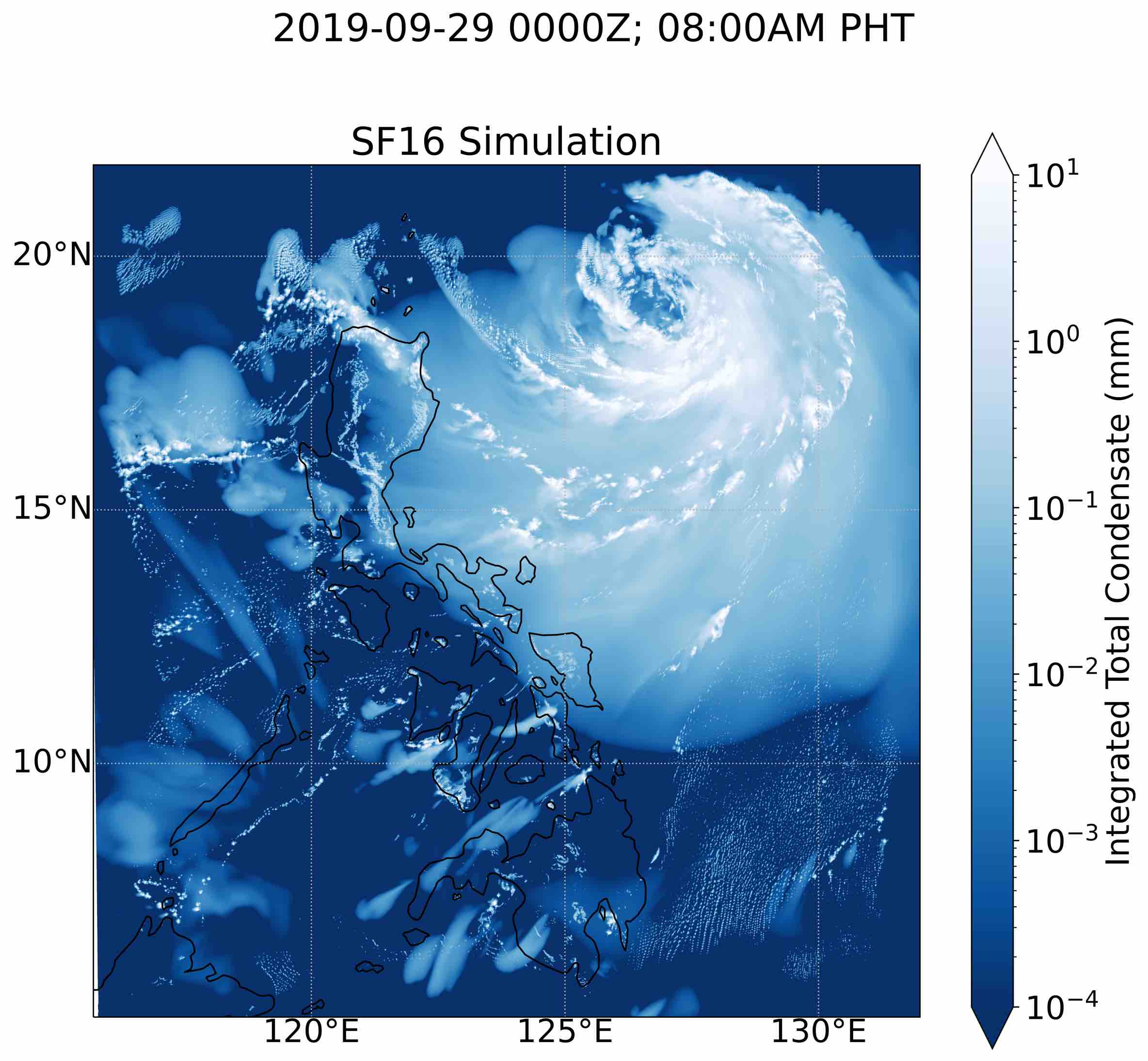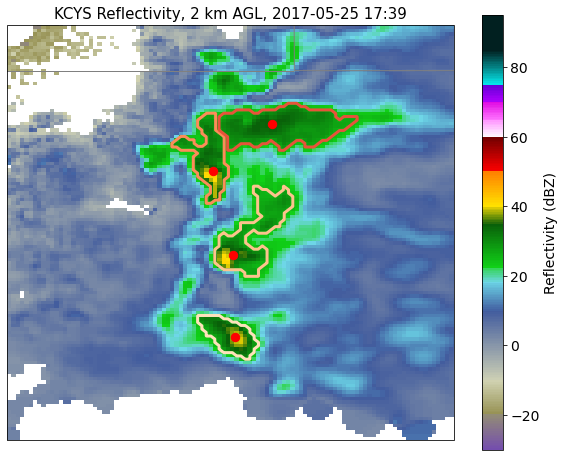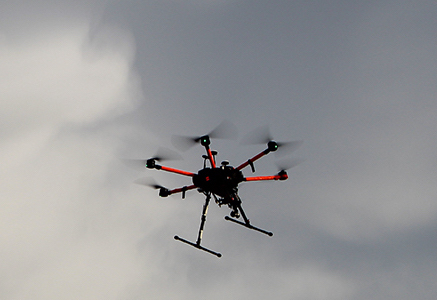Group Research Tools
RAMS
The Colorado State University Regional Atmospheric Modeling System (RAMS) is a comprehensive atmospheric model developed and maintained by the van den Heever group. RAMS can simulate phenomena from large-eddy simulation to regional climate scales, and has been used for simulations of supercell thunderstorms, mesoscale convective systems, cold pools, monsoon systems, sea breezes, extratropical cyclones, hurricanes, and more. RAMS contains both a bin-emulating bulk microphysics scheme and the Hebrew University Cloud Model (HUCM) bin microphysics scheme. The RAMS bin-emulating bulk microphysics scheme predicts the mixing ratio and number concentration of eight different hydrometeor classes and uses pre-calculated lookup tables for nucleation of aerosol. RAMS has a sophisticated treatment of aerosol including eleven different aerosol species. RAMS can simulate and track the emission, advection, nucleation, regeneration, and deposition (both wet and dry) of aerosols. Several radiative schemes are included in RAMS, and radiative-aerosol interactions can be turned on or off allowing for experiments to disentangle aerosol direct and indirect effects. RAMS is coupled to the KPP ocean mixed layer model and the LEAF-3 soil-vegetation-atmosphere transfer model allowing for two-way feedbacks between the atmosphere and surface. For more information about RAMS including source code and documentation, click below.
tobac
The Tracking and Object-Based Analysis of Clouds (tobac) Python package was first developed by Heikenfeld et al. (2019) to facilitate objective 2D identification (“feature detection”), 2D/3D discretization (“segmentation”), and 2D spatiotemporal tracking of cloud objects and other meteorological features in gridded data. This package has the distinct advantage over other comparable tools of being input variable-agnostic, which allows for the above procedures to be conducted on virtually any gridded dataset, meteorological or not. Recent computational and research needs have required improved documentation of this package; enhanced computational efficiency due to the increasing size of observational and model output datasets; inclusion of the 3rd (vertical) dimension in feature detection and tracking for more complex meteorological structures; and a treatment for periodic boundary conditions, as commonly used in idealized numerical models and needed when handling global datasets or model output. Our team has introduced the aforementioned new capabilities, which will be included in the upcoming release of tobac v. 1.5, and is heavily involved with the future development of tobac. This project is a multi-institutional and multi-national collaboration which, beyond Colorado State University, includes researchers from the University of Oxford (UK); Leibniz Institute for Tropospheric Research (Germany); Argonne National Laboratory, Texas Tech University, and Pacific Northwest National Laboratory (USA); Nanjing University of Information Science and Technology (China); and the University of Gothenburg (Sweden). The current stable release of tobac (v. 1.2.1) can be found on GitHub at: https://github.com/climate-processes/tobac.
Drones
The van den Heever group utilizes drones in our research of convective storms. During the C3LOUD-Ex field campaign, drones were equipped with sensors to measure temperature, humidity, and pressure as cold pools passed. A novel “flying curtain” strategy was deployed where drones were flown at varying horizontal and vertical spacings to obtain characteristics of cold pools at high spatial and temporal resolutions. These observations found that cold pool properties vary on spatial scales from the order of 100 m through the order of 1 km. The van den Heever group will again be using our drones to take observations during the upcoming BACS field campaign. In order to fly these drones, several members of the van den Heever group have passed the test to obtain a remote pilot certificate from the FAA.


